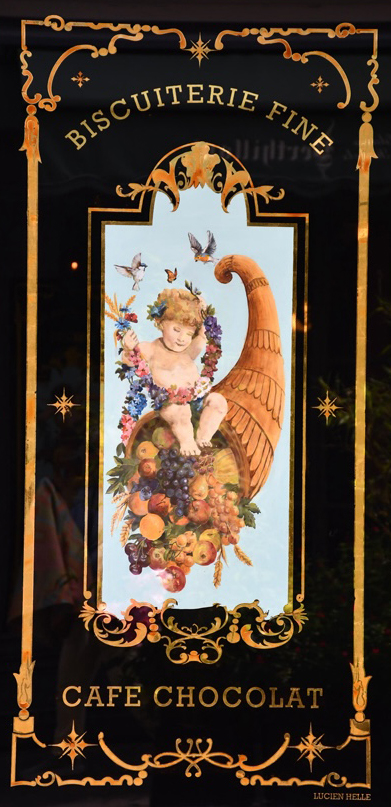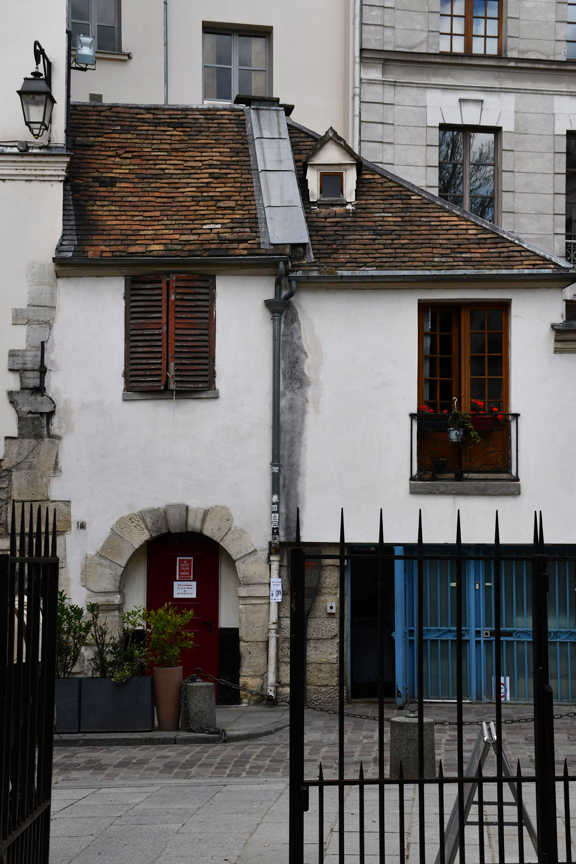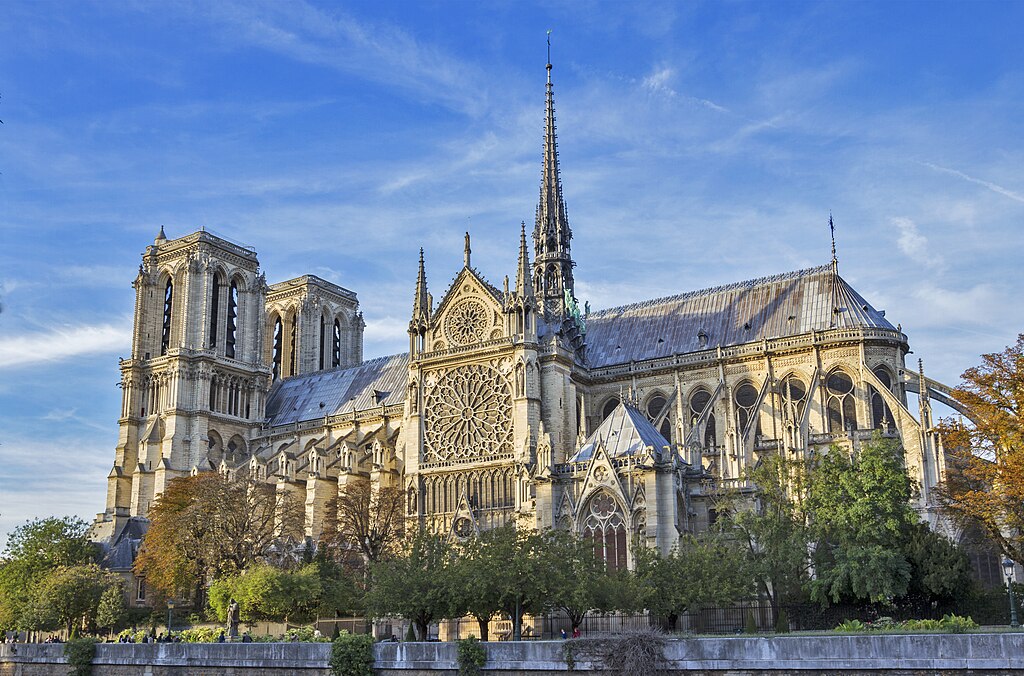
Notre Dame de Paris before the fire (photo courtesy of wikipedia)
The cathedral is a widely recognized symbol of the city of Paris and the French nation.

Today on can see the repair being done to the roof.
Below- One can still view partially the front facade.
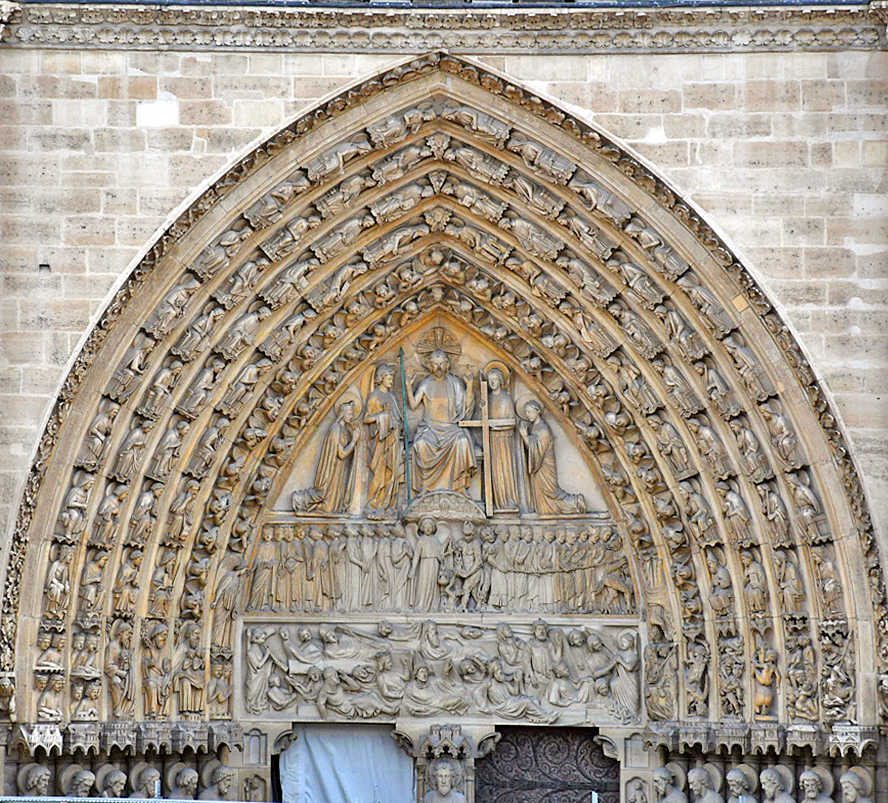
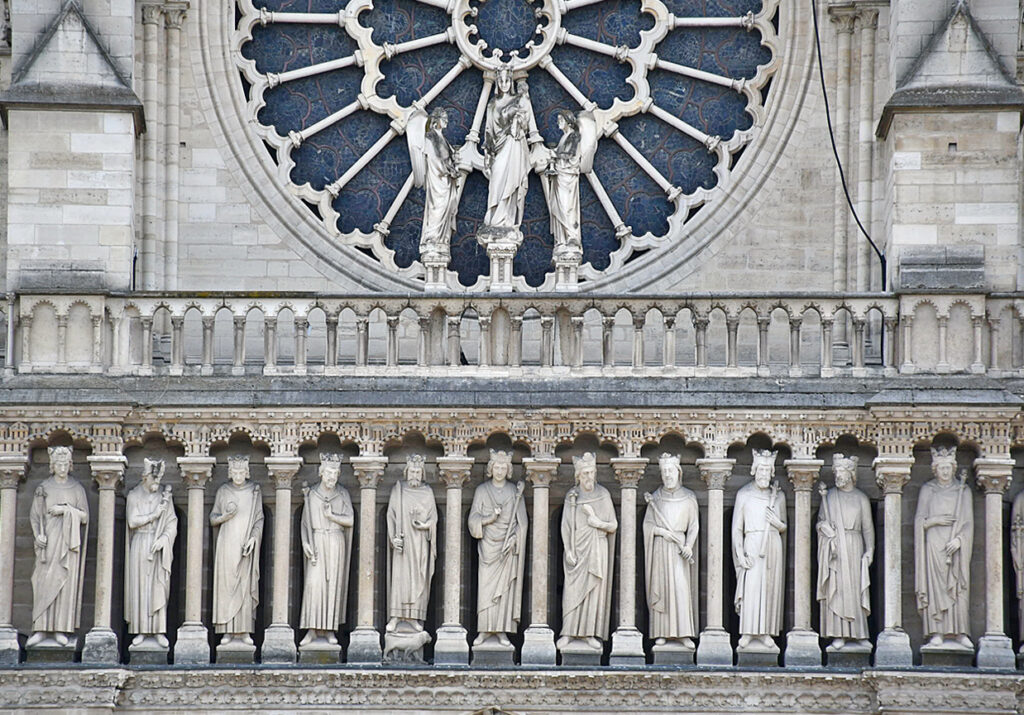
The cathedral, dedicated to the Virgin Mary, is considered one of the finest examples of French Gothic architecture. because of its pioneering use of the rib vault and flying buttress, its enormous and colourful rose windows, and the naturalism and abundance of its sculptural decoration.
Construction of the cathedral began in 1163 under Bishop Maurice de Sully and was largely completed by 1260, though it was modified in succeeding centuries. In the 1790s, during the French Revolution, Notre-Dame suffered extensive desecration; much of its religious imagery was damaged or destroyed. In the 19th century, the coronation of Napoleon and the funerals of many of the French Republic’s presidents took place at the cathedral. The 1831 publication of Victor Hugo’s novel Notre-Dame de Paris (in English: The Hunchback of Notre-Dame) inspired interest which led to restoration between 1844 and 1864, supervised by Eugène Viollet-le-Duc.
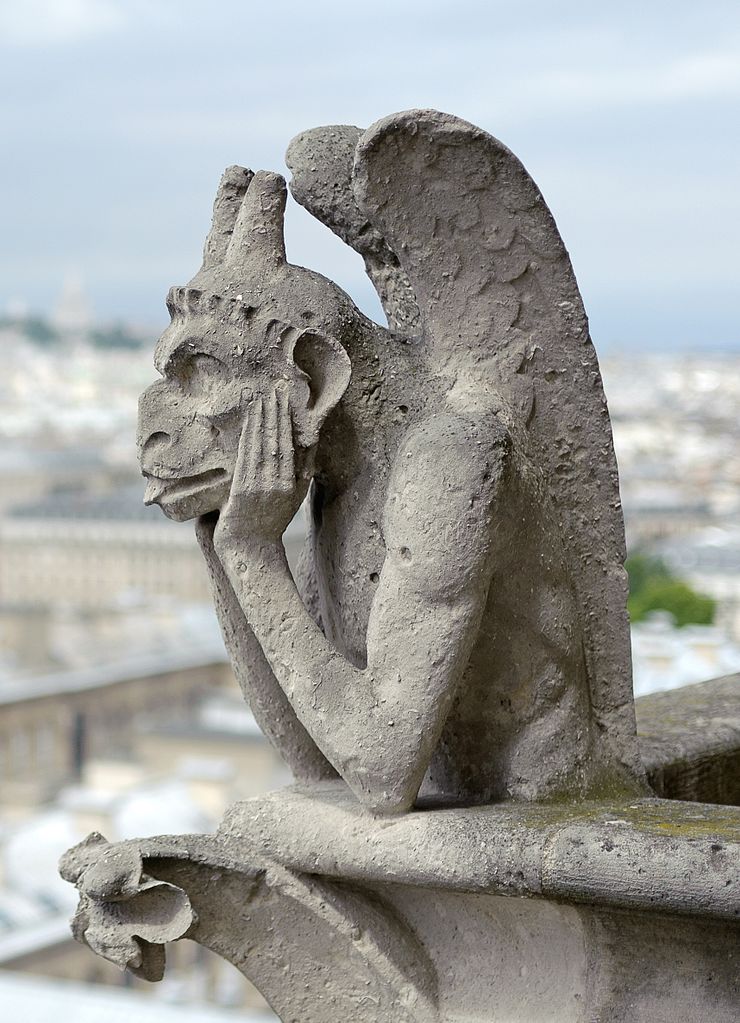
Above photo courtesy of wikipedia
Over time, the cathedral has gradually been stripped of many decorations and artworks. However, the cathedral still contains Gothic, Baroque, and 19th-century sculptures, 17th- and early 18th-century altarpieces, and some of the most important relics in Christendom – including the Crown of Thorns, and a sliver and nail from the True Cross.

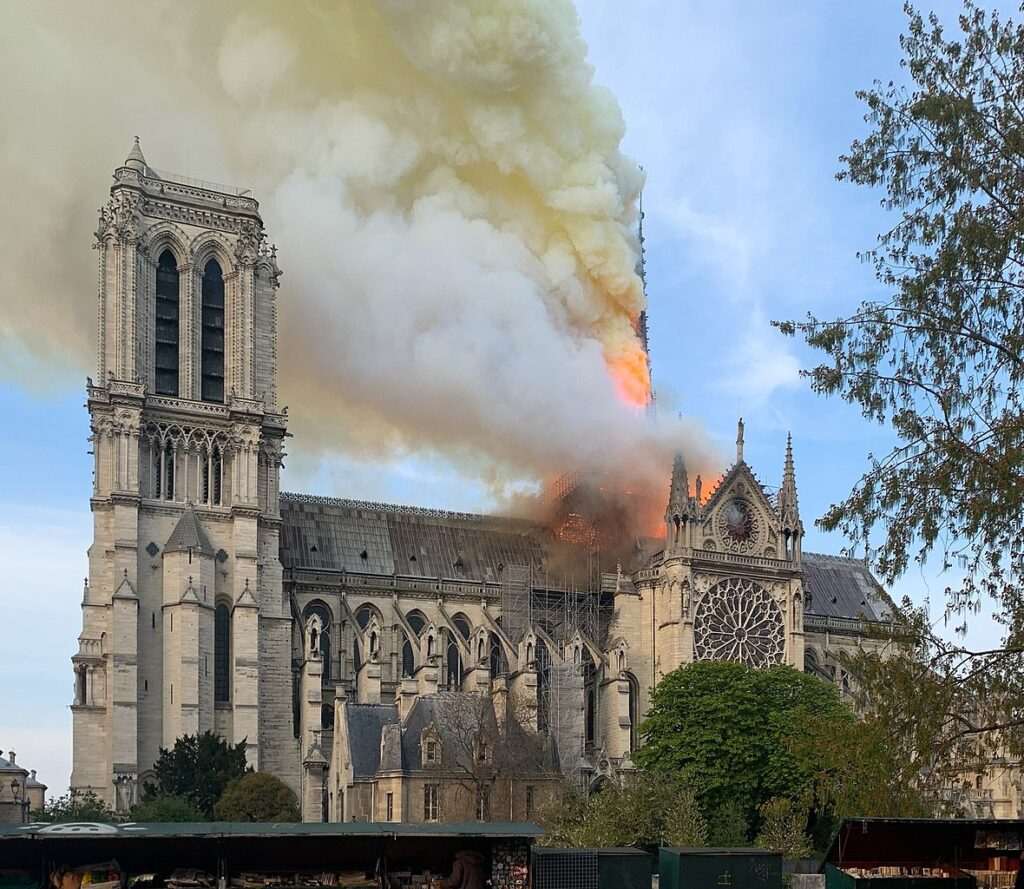
A fire in April 2019 caused serious damage and forced the cathedral to close for five years;
it is planned to reopen on 8 December 2024. (Photo courtesy wikipedia)
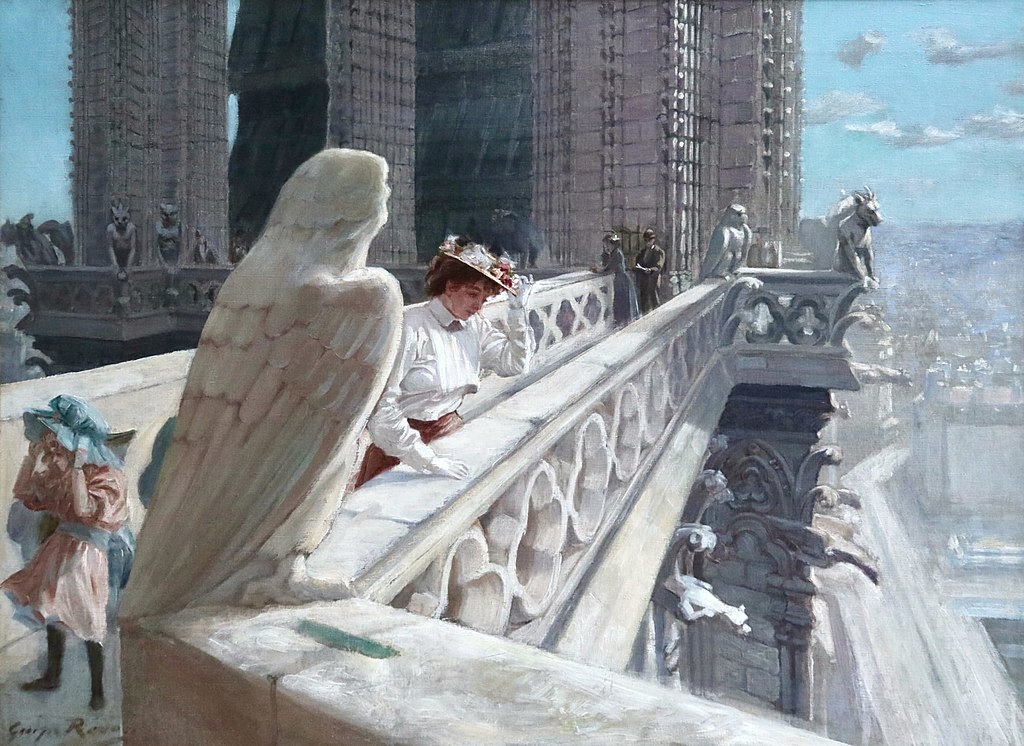
The Gallery of Chimeras by Georges Redon 1910 (courtesy of wikipedia)
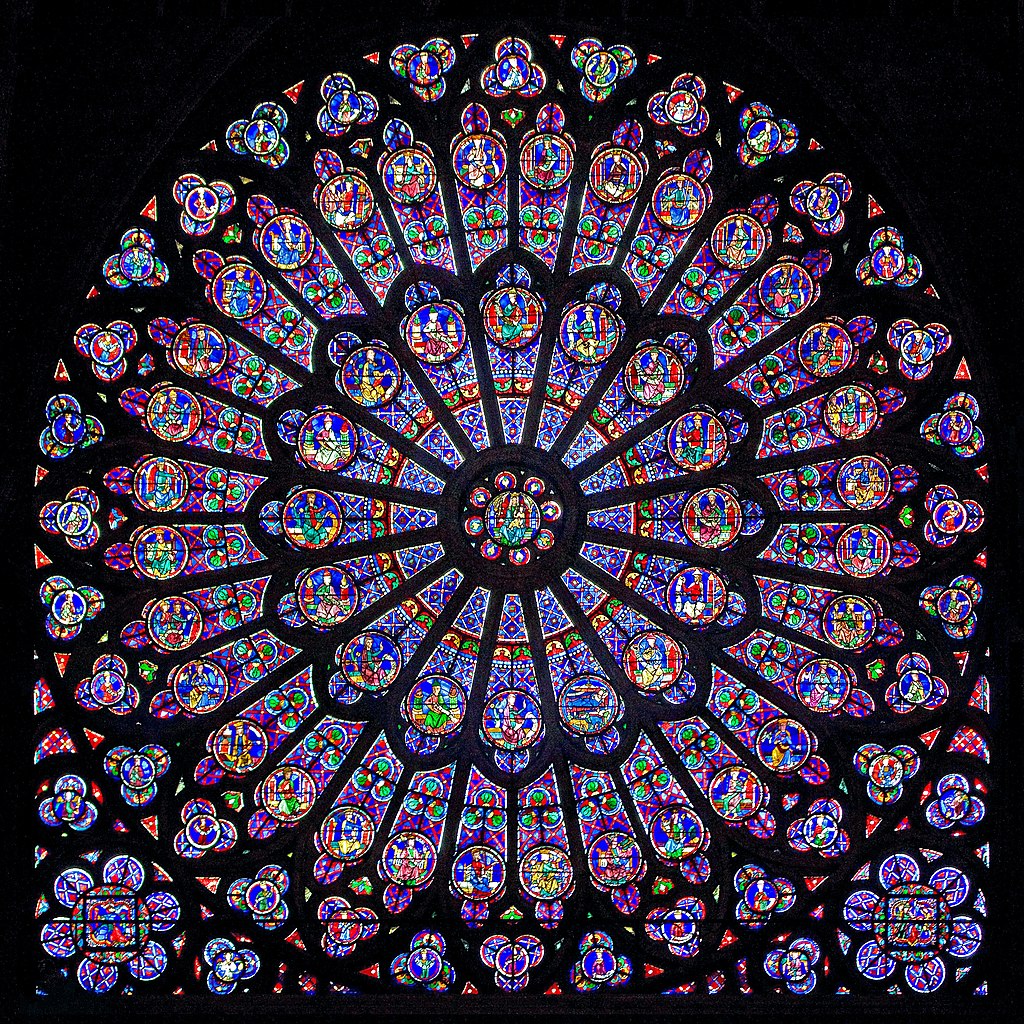
Gothic rose window (Photo courtesy wikipedia)
Although not being able to view the interior of the Notre Dame we were able to view the interior of the nearby Sainte Chapelle.
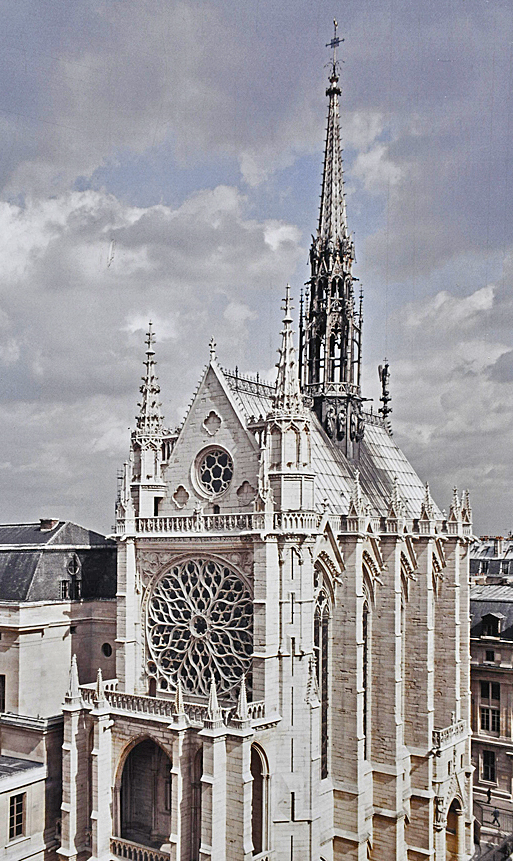
It is now hidden in an interior courtyard of Palace of Justice but was once part of the Palace of King Louis IX- and this was his private chapel.
It was built between 1242 and 1248 to house the Crown Of Thorns acquired in 1239 for a sum which exceeded the actual cost of the building.
It was restored in 1846 onwards after some years of disrepair but the stained glass windows were always in good repair.
The lower chapel (which one enters via) was for the Palace staff
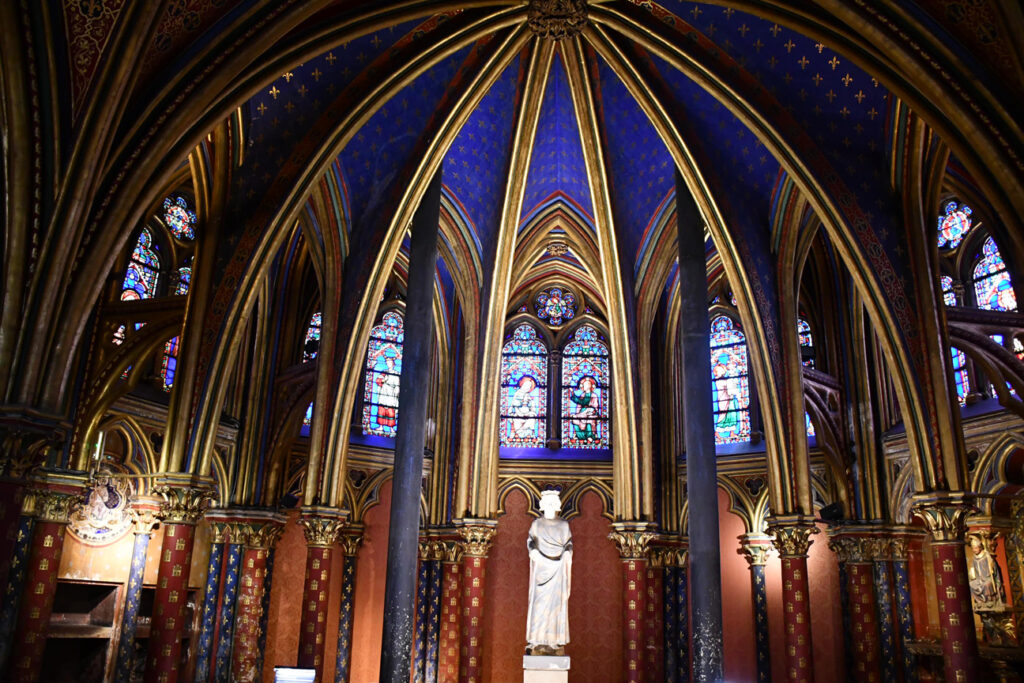
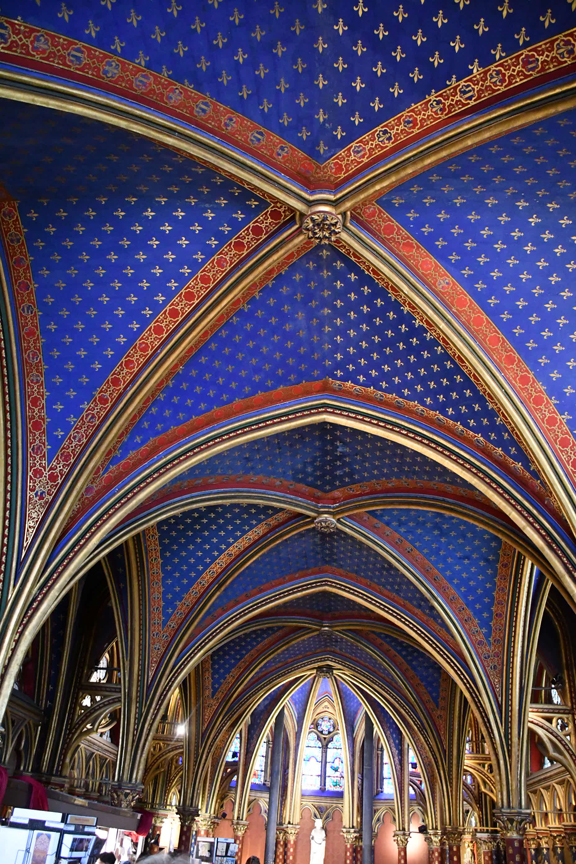
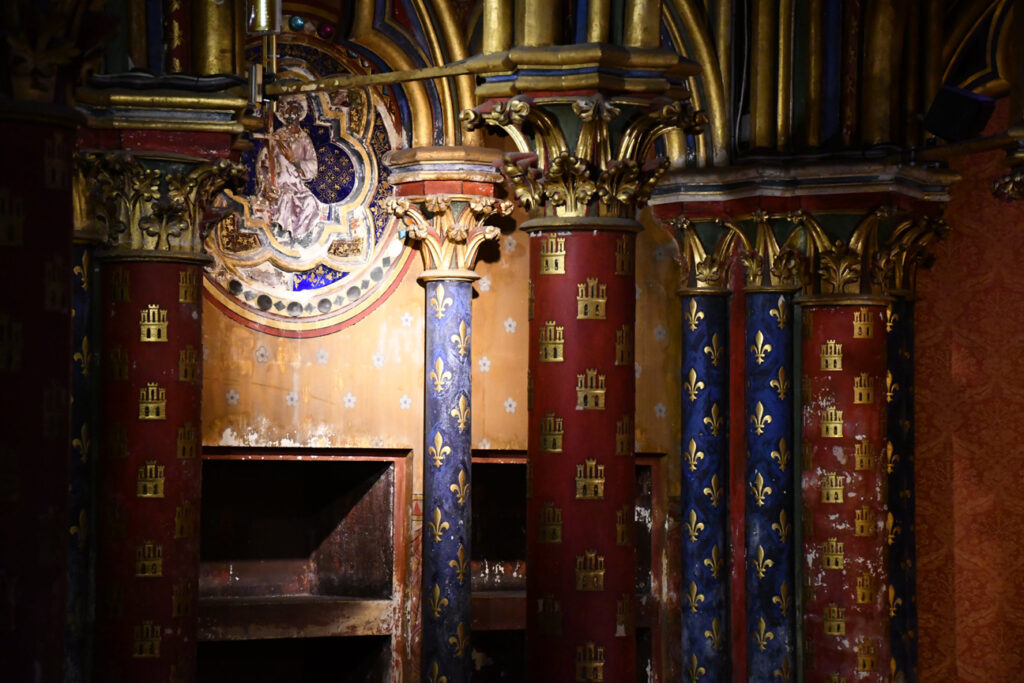
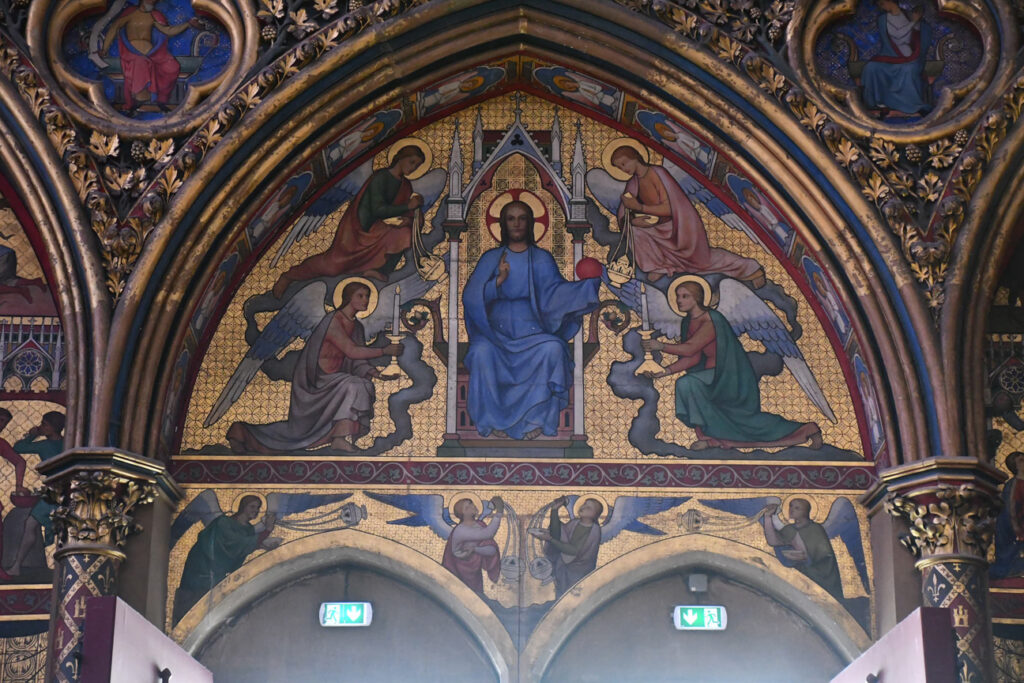
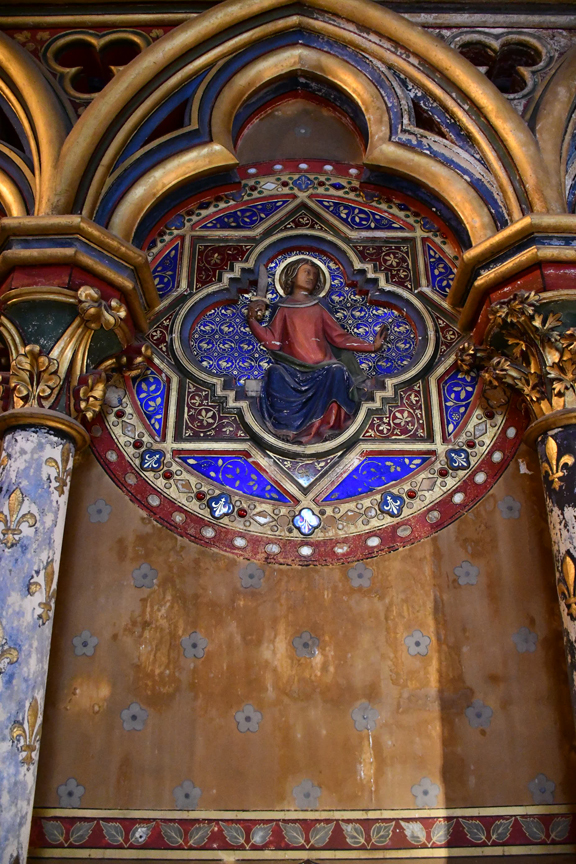
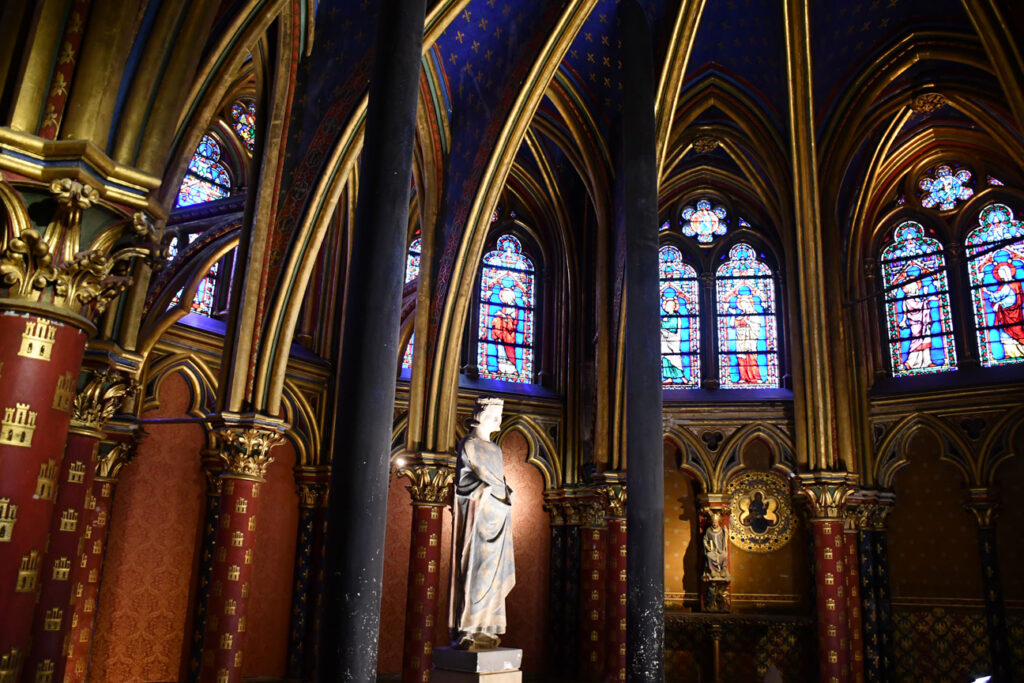
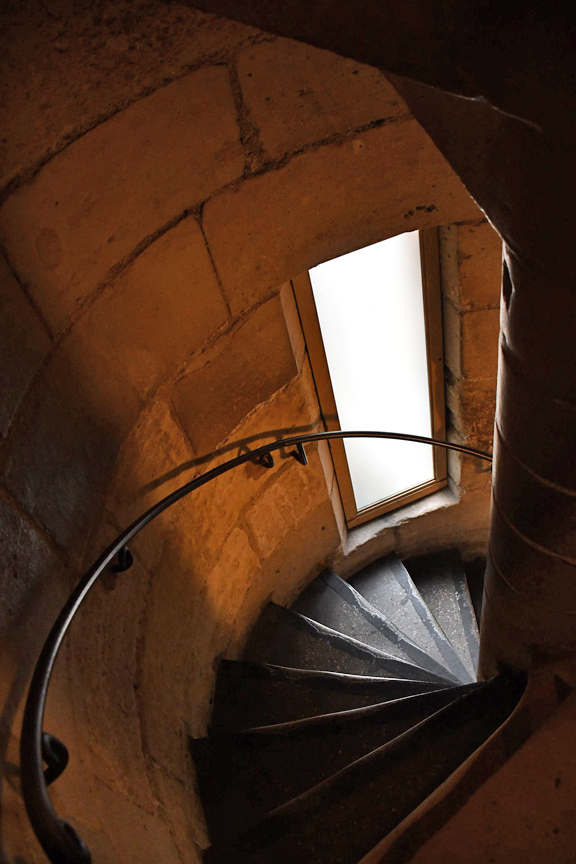
The winding stairs between the lower and upper rooms

The King and his family entered through an upper door from a terrace that connected to the Palace
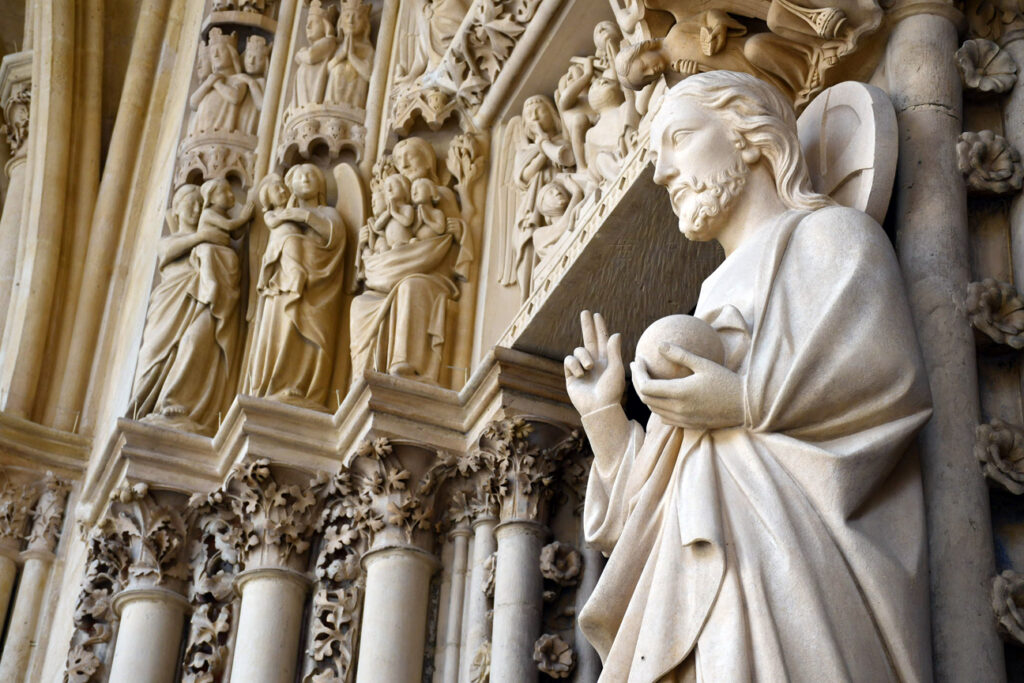
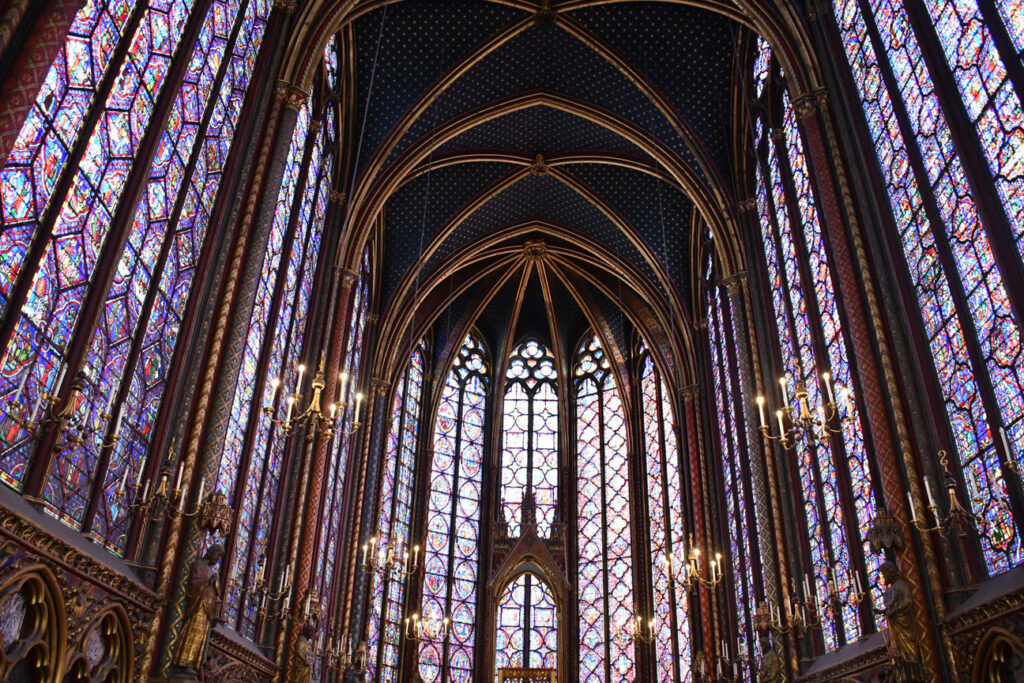
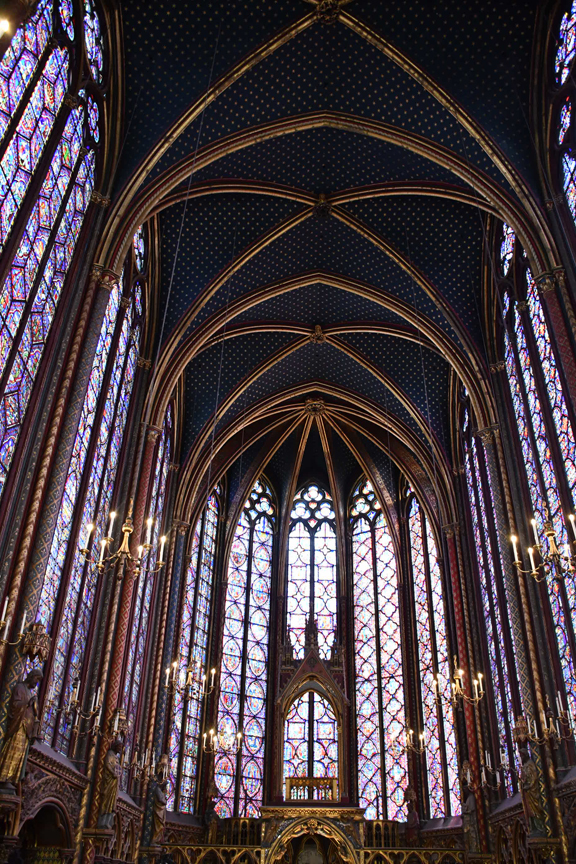
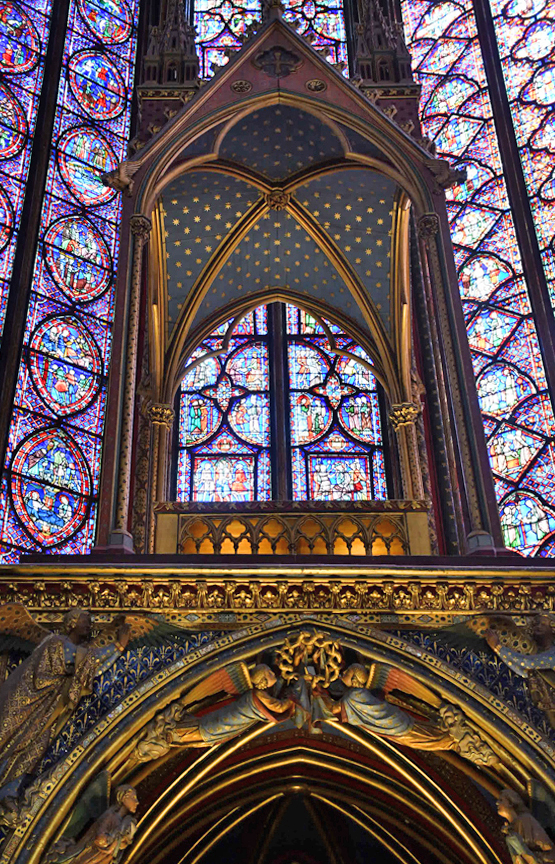
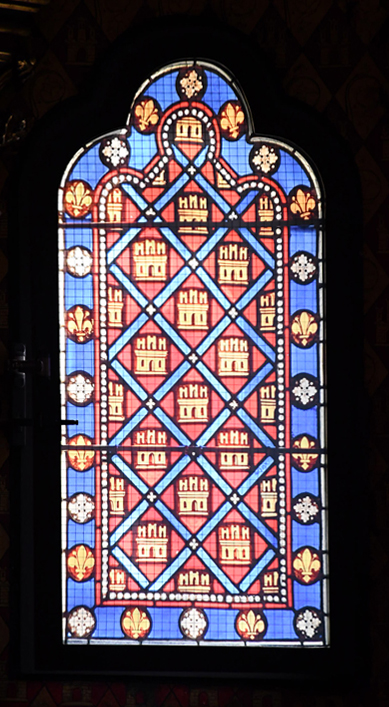
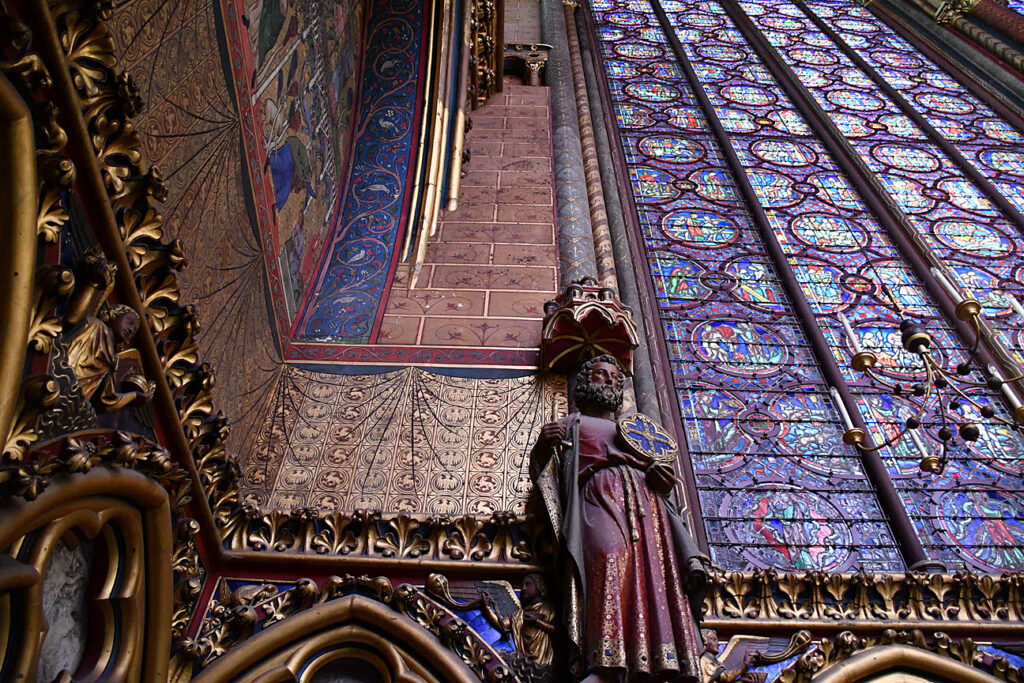
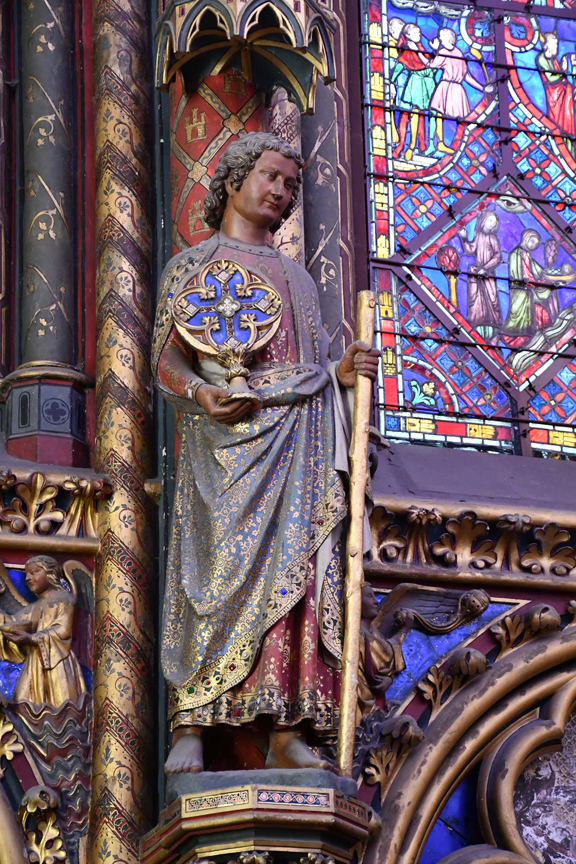
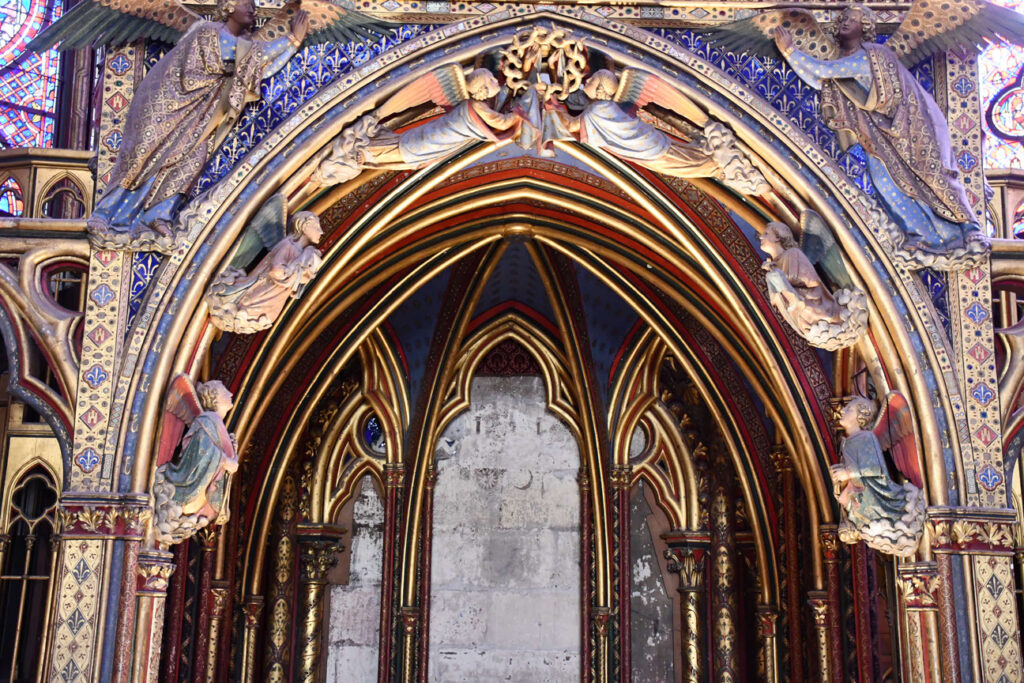
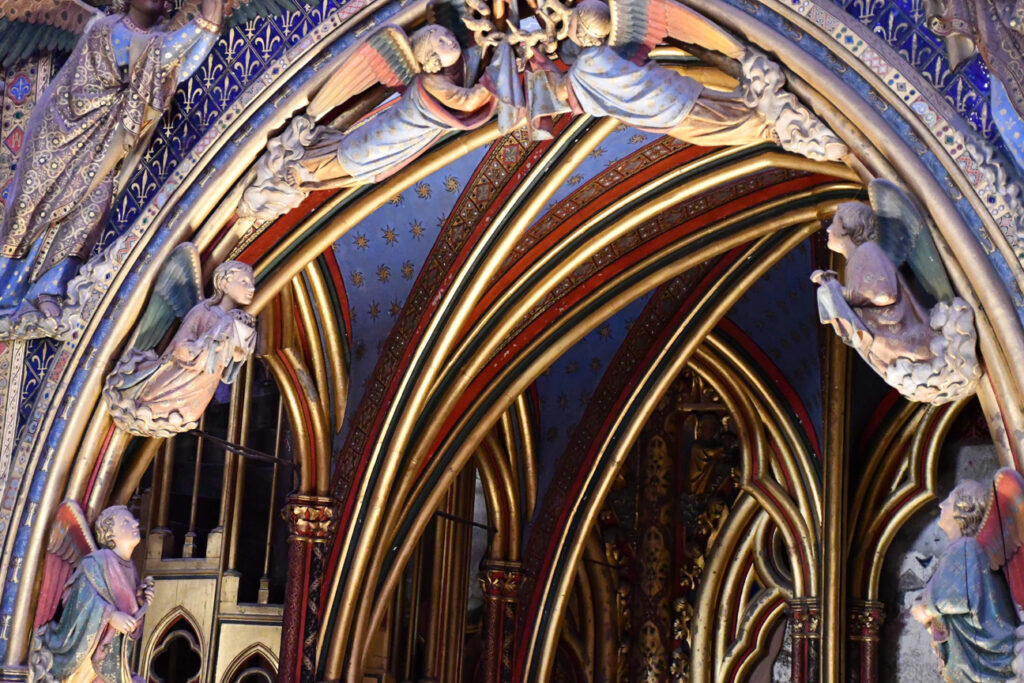
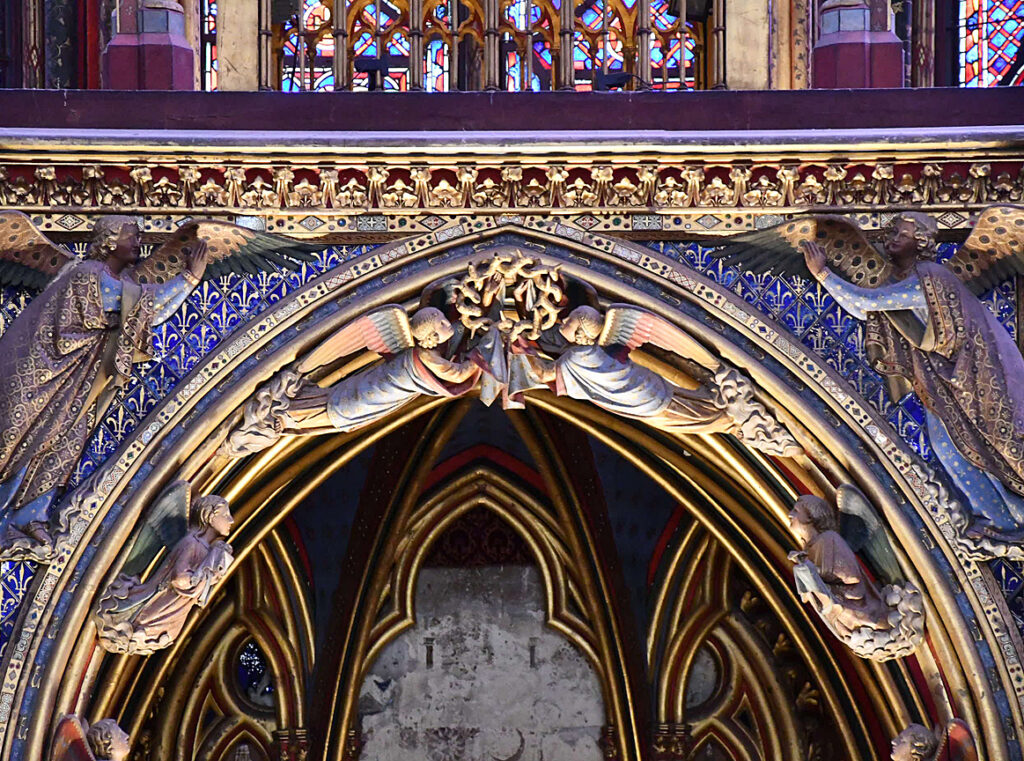
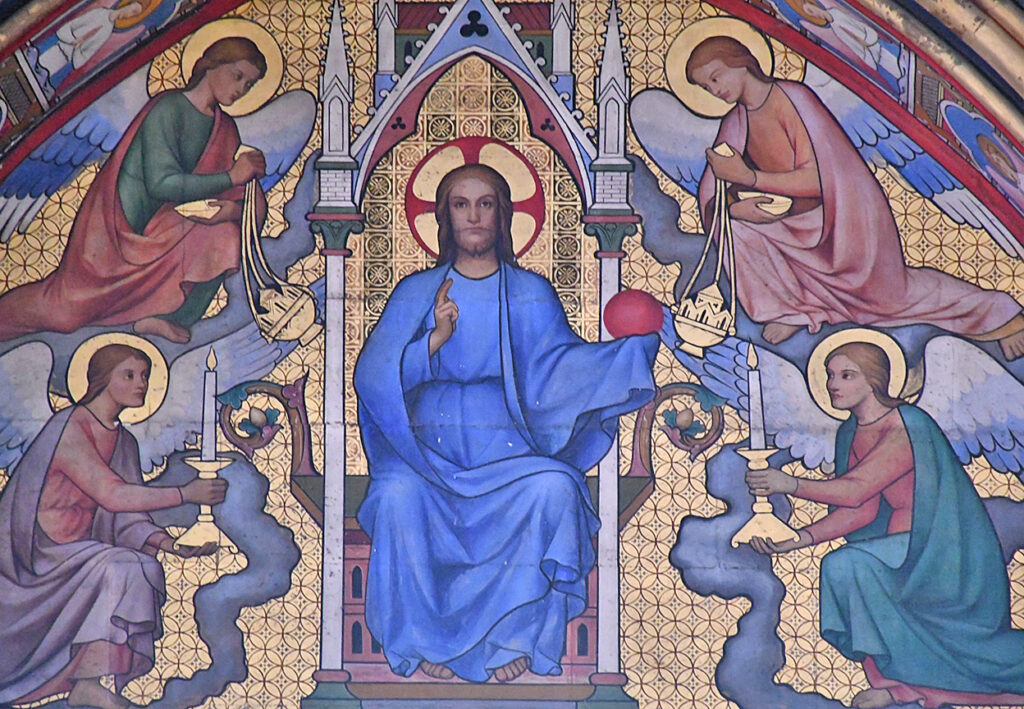
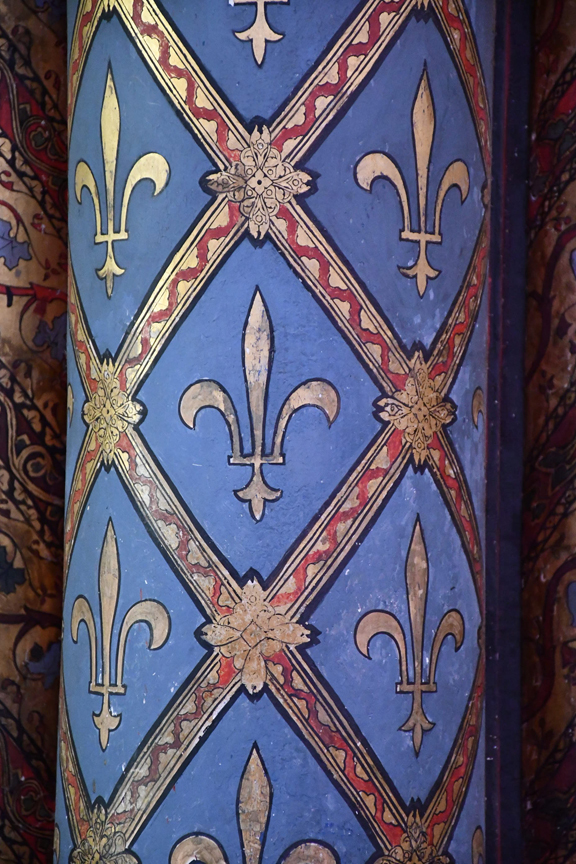
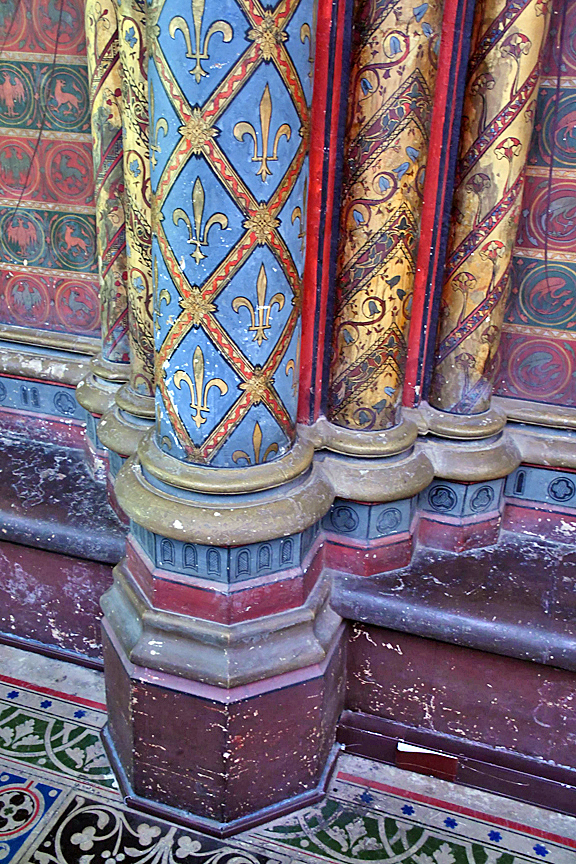
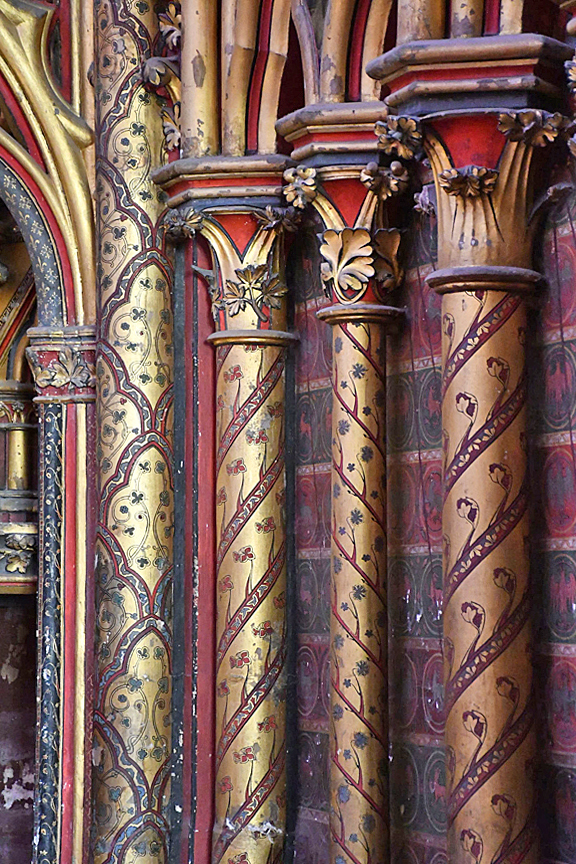
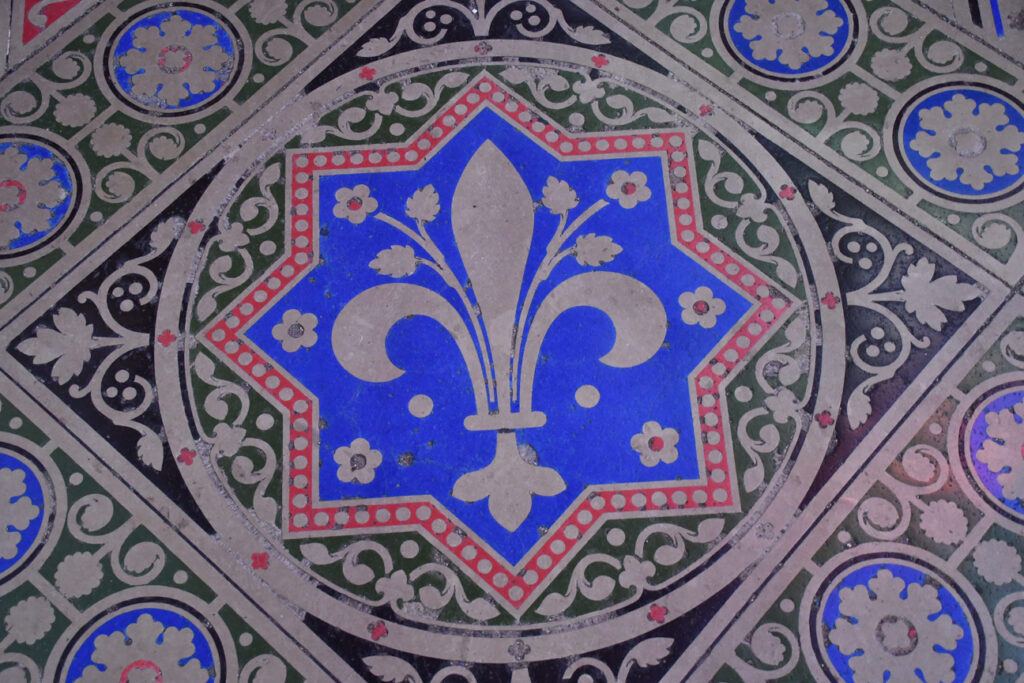
The floor tiles.
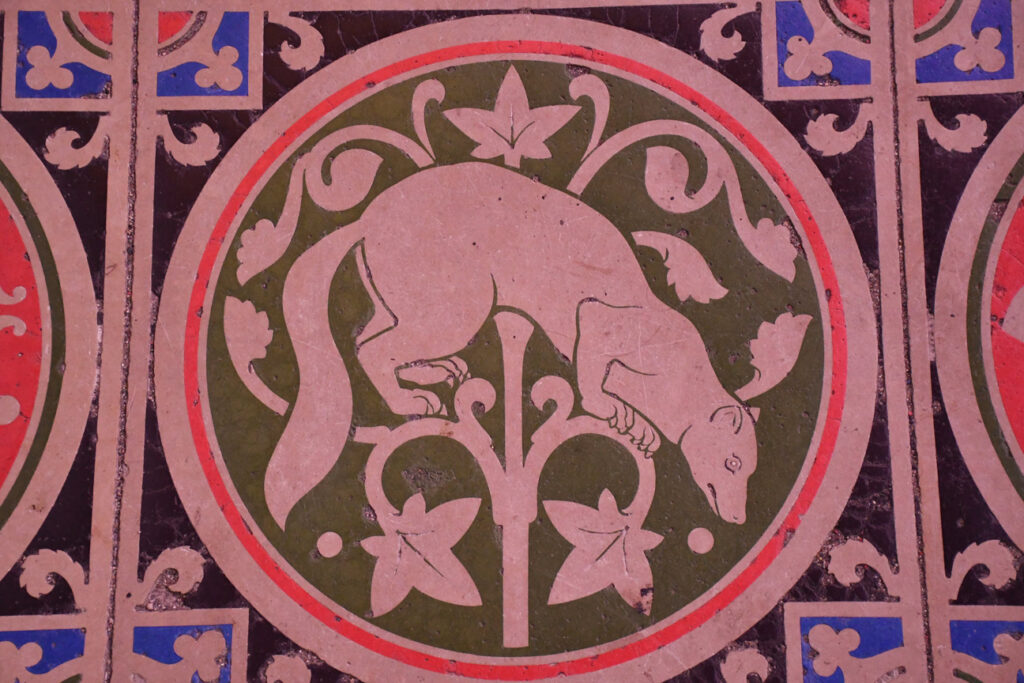
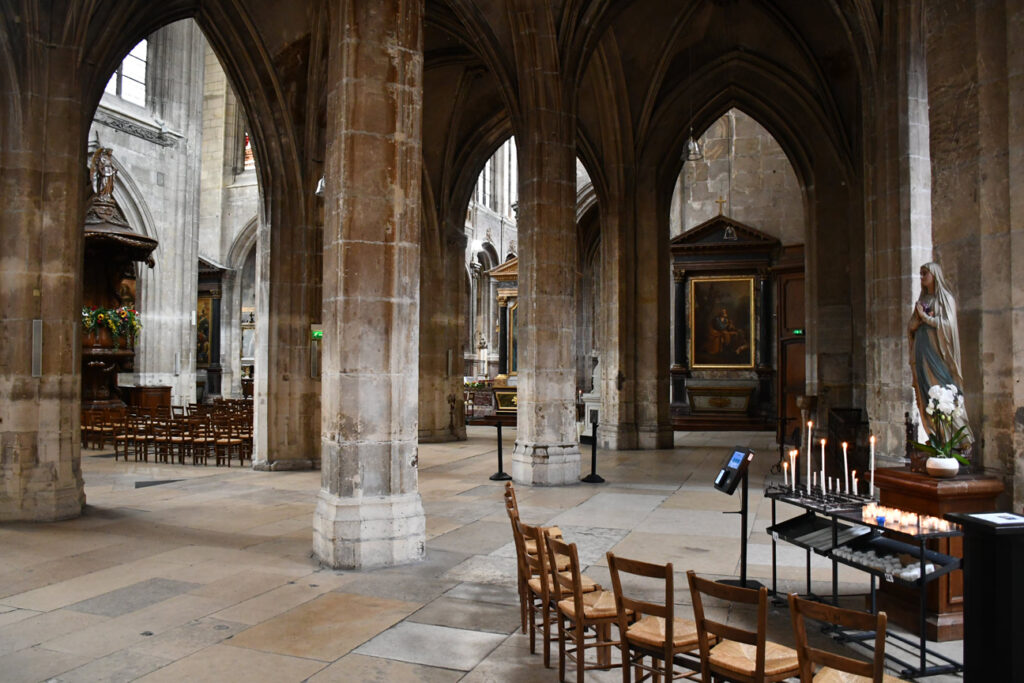
On the way to Notre Dame we passed The Church of Saint-Merri on the Rue Saint Martin. It is dedicated to the 8th century abbot of Autun Abbey, Saint Mederic, who came to Paris on pilgrimage and later died there in the year 700. In 884 Mederic was declared patron saint of the Right Bank.
Although its origins go back to the 700´s the present church was begun in about 1520, and finished in about 1560. Though it was built in the middle of the Renaissance, it was built in the Flamboyant or late Gothic style.
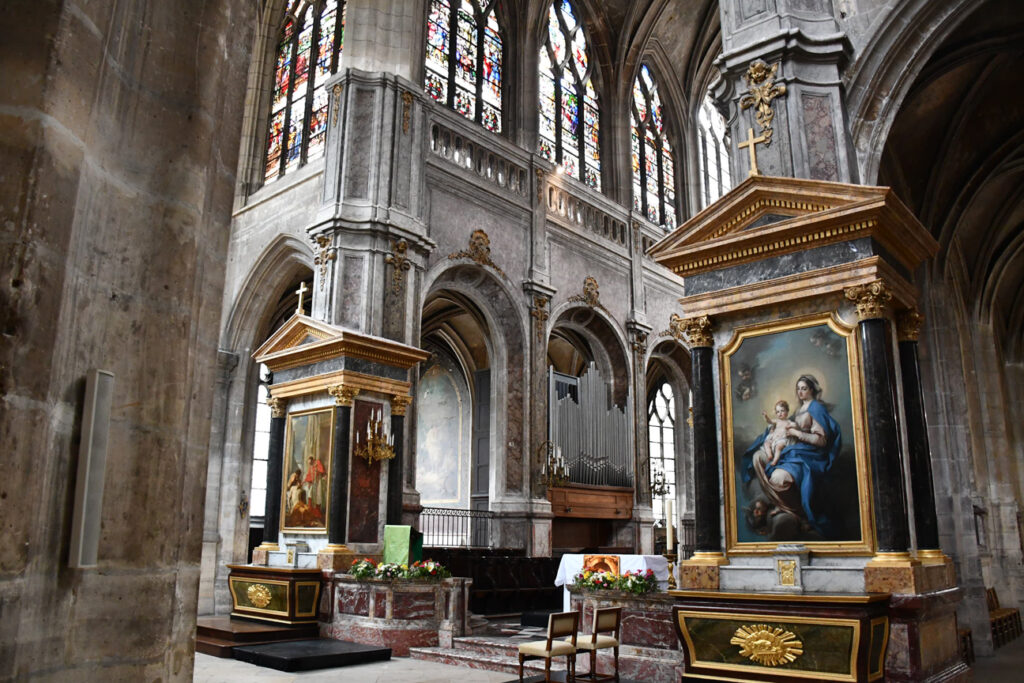
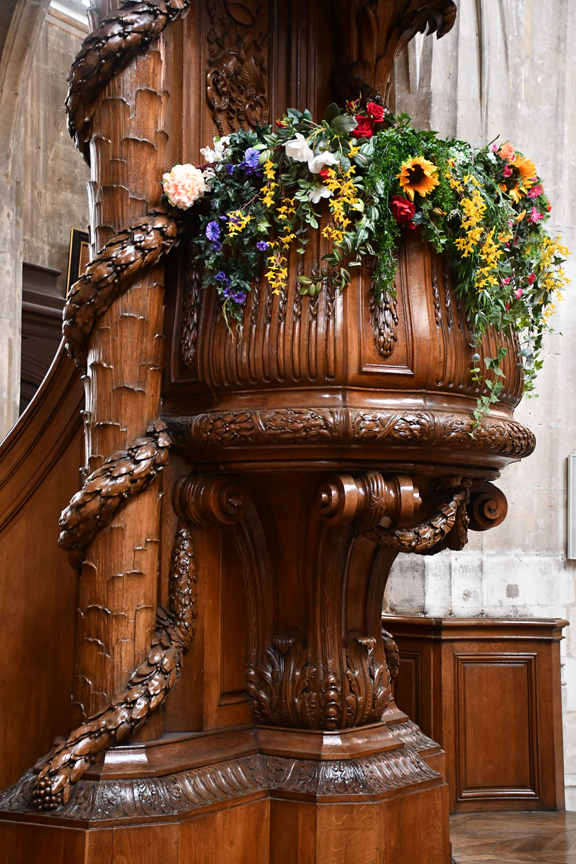
Wandering the Ille De Cite where Notre Dame is situated, there are still some remnants of its medieval history such as this restuarant below.
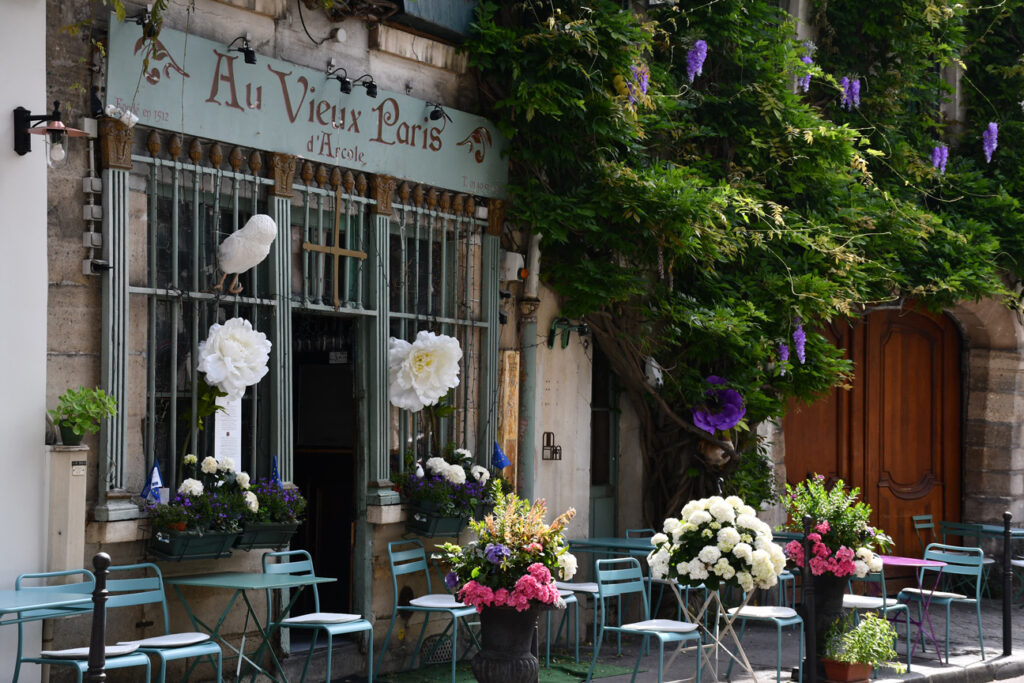
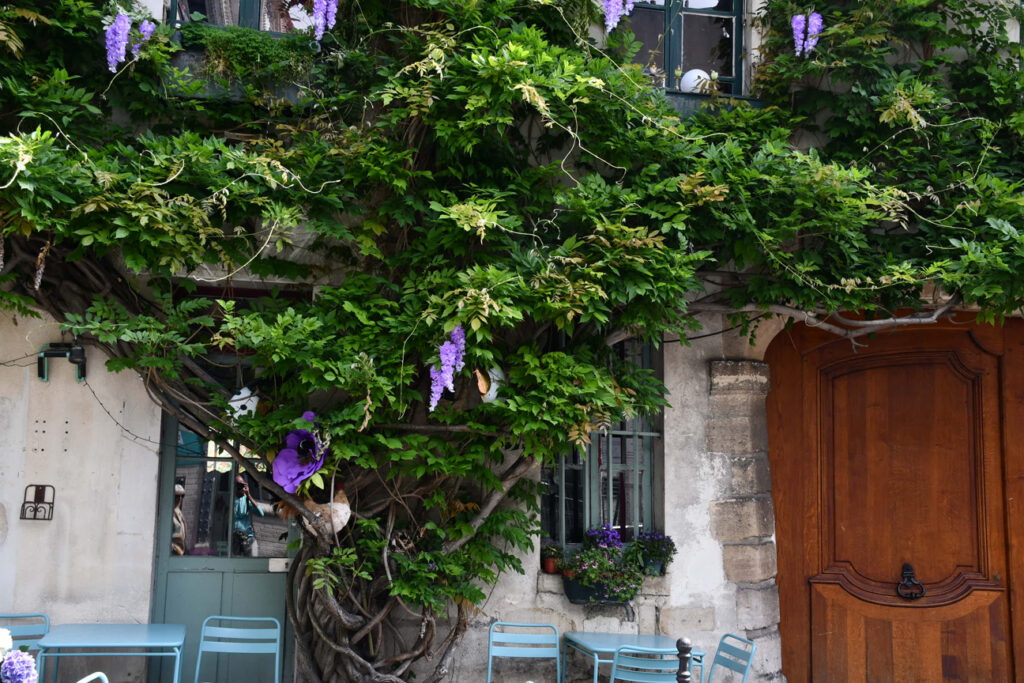
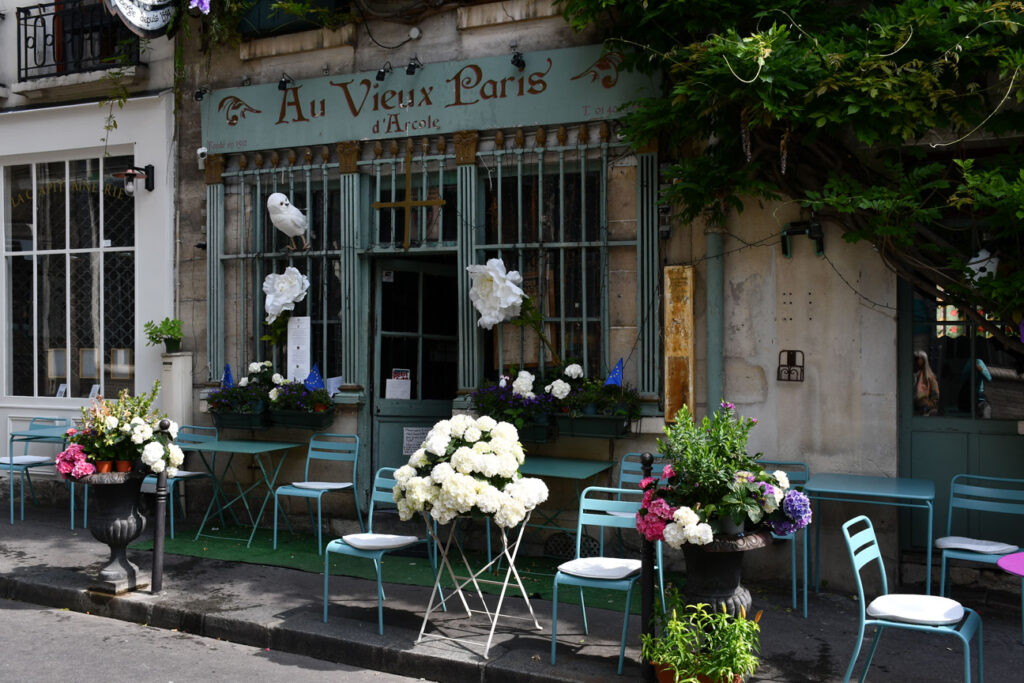
Founded in 1512
